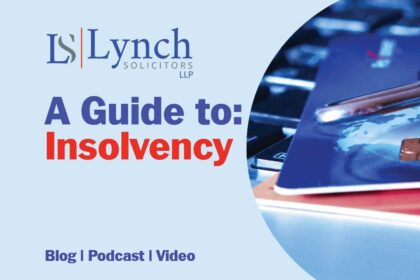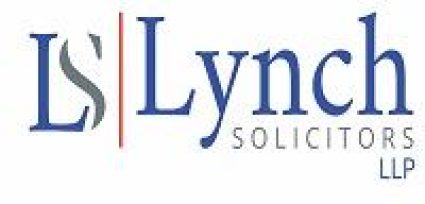
This is a guide to insolvency to assist people with debt related issues. The guide also has links throughout that will enable you to find out more about issues such as Debts Settlement Arrangements, Personal Insolvency Arrangements, and other issues. To read those related articles, simply click the links that are highlighted in bold.
The Personal Insolvency Act 2012 introduced new measures to help those with mortgage arrears or other debt.
Under the new regime there are a number of options available to those in difficulty with debt:
Debts Settlement Arrangement
This option covers loans with two or more creditors in the amount of €35,000 or more. The borrower will have to pay off a certain amount for up to 6 years and the balance may possibly then be written off.
A DSA allows for the settlement of unsecured debt; secured debt is unaffected.
It is a once in a lifetime option and may be proposed by a debtor to one or more creditors for the settlement of unsecured debts.
The debtor must be insolvent and meet certain eligibility criteria. The option cannot be availed of if 25% or more of the debts in question arise within 6 months of the application.
The debtor must provide a written statement of their financial affairs called a PFS – a Prescribed Financial Statement.
The Insolvency Service will, if it is satisfied that the application is in order, issue a certificate to that effect and forward this to the courts who can then issue a protective certificate (lasting 70 days with provision for extension). This then limits further enforcement for that period. The Insolvency Practitioner must then notifies the relevant creditors, and invites submissions as to how the debts might be dealt with.
At a meeting, Creditors who hold not less than 65% in value of the debts due must approve the DSA.
If the DSA is approved by the court it takes effect once registered by the Insolvency Service in the Register of Debt Settlement Arrangements. It lasts for 5 years (with a possibility of an extra year) with the debtor discharged after this time.
Personal Insolvency Arrangement (PIA)
This option will apply specifically to mortgage holders and those with secured debts of €35,000 to €3 million and unlimited unsecured debt. The process is similar in that the Insolvency Practitioner will make the application after the financial statement has been completed and 65% of the lenders again must be in agreement for some of the debt to be written down. A protective certificate also issues here if all is in order and the Insolvency Practitioner must then notify the relevant creditors of the issue of the protective certificate and the proposed PIA, seek creditor submissions and provide them with certain documents.
Again, those who avail of a Personal Insolvency Arrangement can only do so once.
Specific provisions are included which are designed to ensure that a minimum amount is payable to secured creditors and that any write-down does not reduce the amount to be paid to the secured creditor on the sale of the property below the lesser of the value of the security or the amount of the debt secured thereby. It also provides for revision if the property is subsequently sold for an amount greater than the written-down value of the debt it secured unless agreed otherwise.
All secured debts (except family homes) are treated the same.
There is an appeal mechanism available where the family home is involved, the debtor was in arrears on 1st January 2015, and at least on the class of creditor voted in favour of the arrangement.
Video: A Guide to Personal Insolvency
Lynch Solicitors for Information Purposes Only
Explore Your Options: They Do Exist
The first port of call for if you are insolvent – cannot meet your debts as they fall due – is to contact a Personal Insolvency Practitioner who will assess your situation and advise on which arrangement, if any, would be suitable. The PIP acts as a go-between for you, the debtor with the creditors, the Insolvency Service and the Courts.
One of the first things a PIP will do is get a Protective Certificate for you. This puts a freeze on creditors – stopping any creditors pursuing you for a specified limited amount of time to allow for proposals and negotiations to be conducted.
Prescribed Financial Statement (PFS) – The Blueprint Document
One of the most important and preliminary steps will be to get full and detailed particulars of your assets and liabilities. This involves the completion of a Prescribed Financial Statement.
Effectively, the PFS is a full, frank, and detailed statement of what you own, what you owe, and what the balance is.
If you are entering into a Debt Settlement Arrangement or a Personal Insolvency Arrangement the PFS will be completed with the help of your Personal Insolvency Practitioner and will form the cornerstone of any application made.
The PFS would form the basis of calculating what repayments will be made to creditors and what portion of monies can be kept by you to maintain a reasonable standard of living.
If you are not suited to an Arrangement you also have the option of Bankruptcy.
Bankruptcy is generally availed of where there are no assets, little income, and unsustainable debt.
It lasts for one year with the possibility of making payment to creditors for 3 years where there is enough income surplus.
Podcast: What You Need To Know About Personal Insolvency
A Personal Insolvency Practitioner – The Facilitator
Personal Insolvency Practitioners will:
- Help you in preparing a detailed financial statement.
- Use this information to advise on what debts can be included and put together proposals based on your circumstances.
- Submit proposals to your creditors once the various options and consequences are discussed.
- Liaise with the creditors to try to find a solution which all parties can agree on.
- Organise a meeting of creditors to vote on the proposals.
- Organise the approval of any agreed Arrangement with the courts and its registration with the Insolvency Service of Ireland.
A detailed plan will be given to you if you are availing of relief under the Act setting out your obligations and specifying the time frame within which these obligations are to be met. The practitioner will also be responsible for monitoring the payment arrangements for their duration.
Remember – You Are Not Alone
We are dealing with people from all walks of life and all levels of income and debt from social welfare recipients to working professionals, from those who are dealing with relatively low levels of personal debts to those who owe millions with a portfolio of properties in negative equity.
I am one of a few solicitors in the Country who is a Personal Insolvency Practitioner and consider that I bring a particularly legal angle to the problem of debt resolution. Contact me on 052 6124344 if you would like to discuss your debt resolution issue or email my colleagues at reception@lynchsolicitors.ie to arrange an initial discussion.

